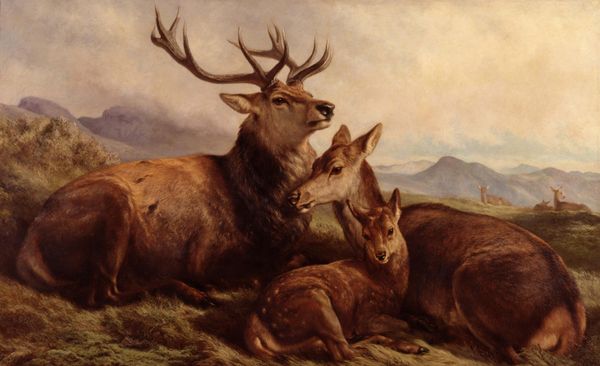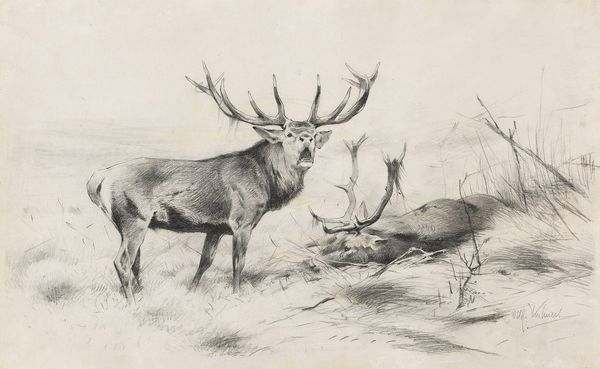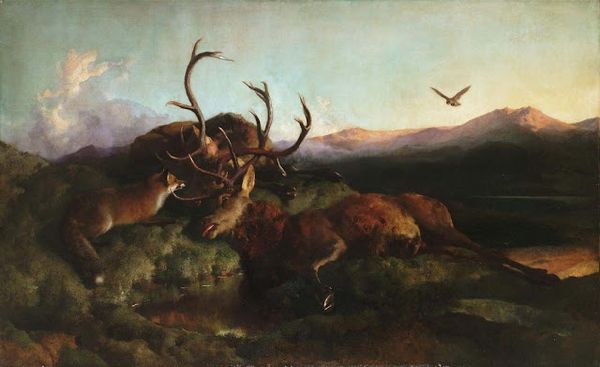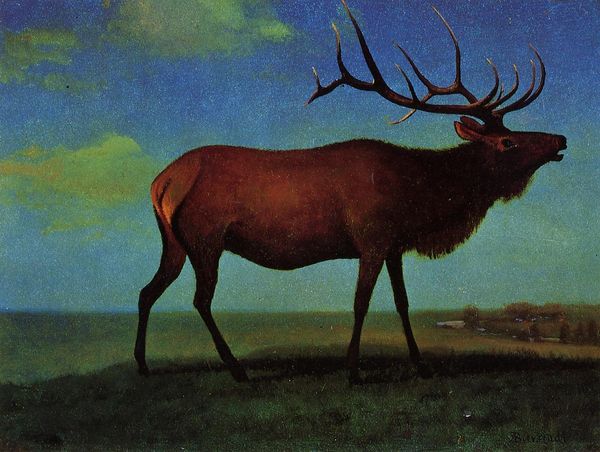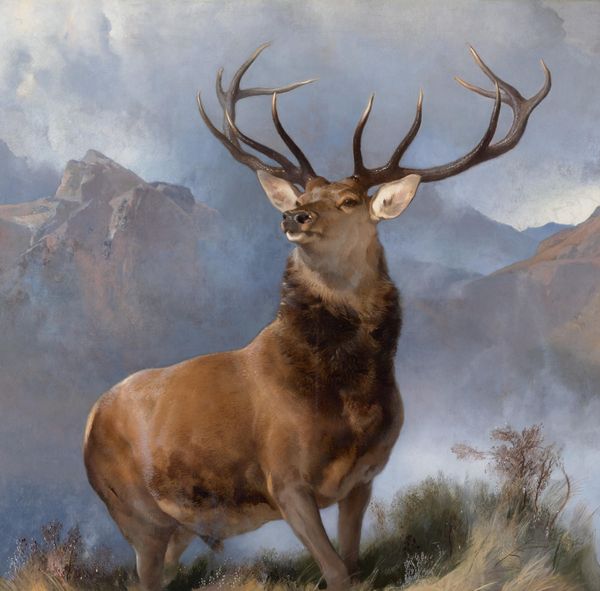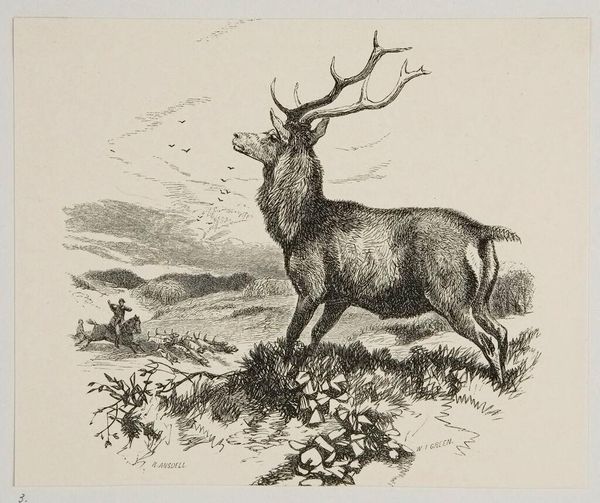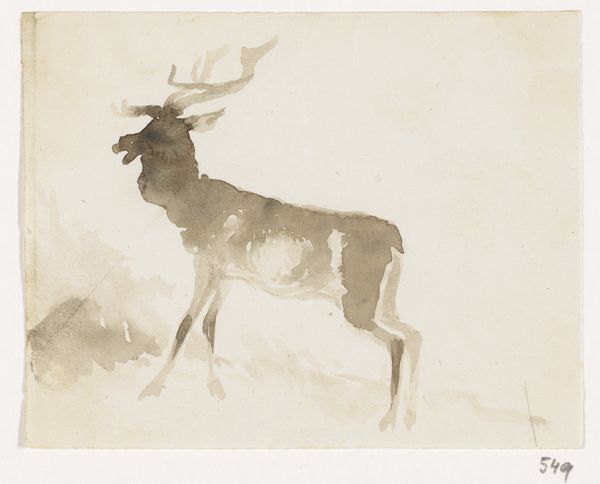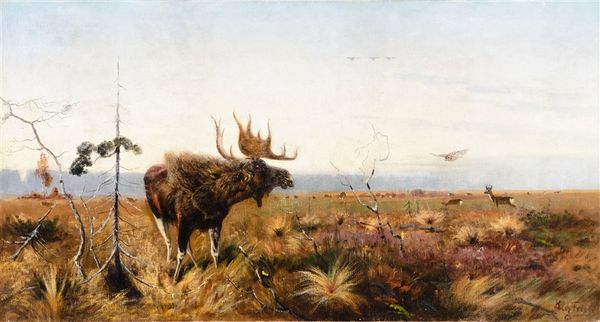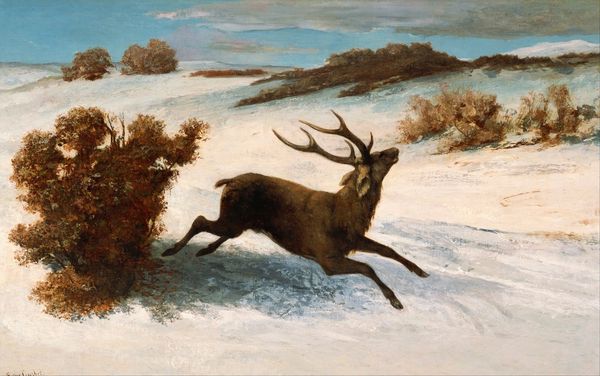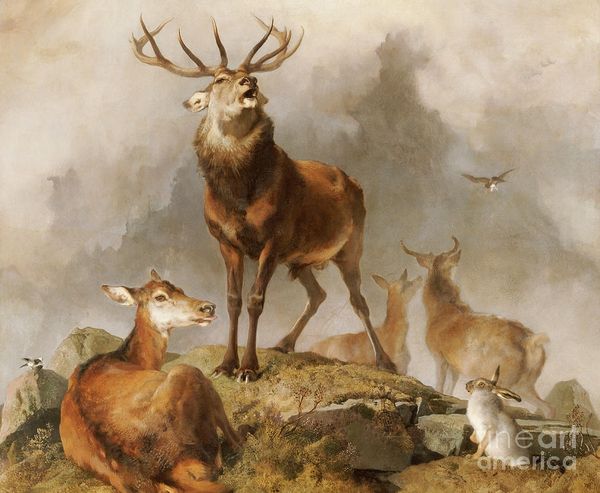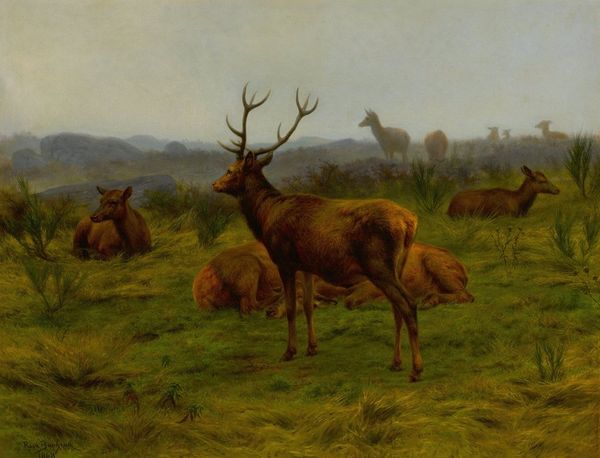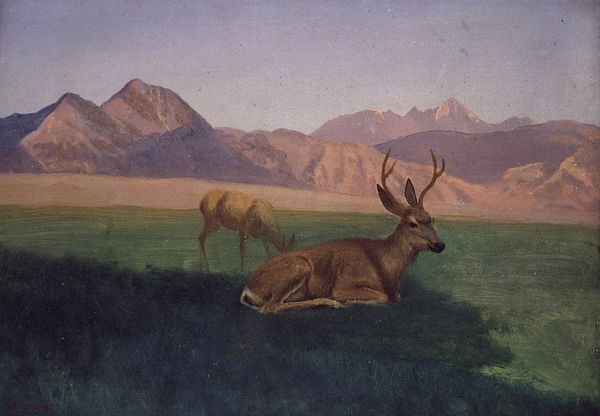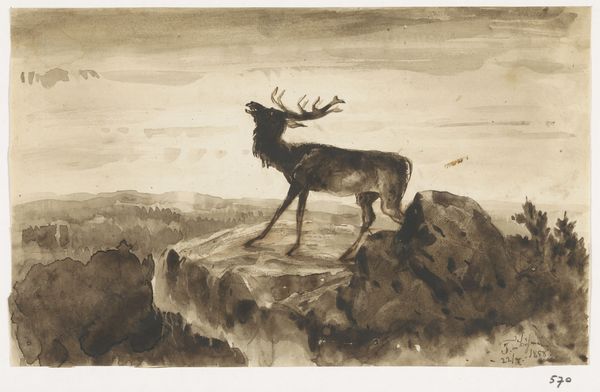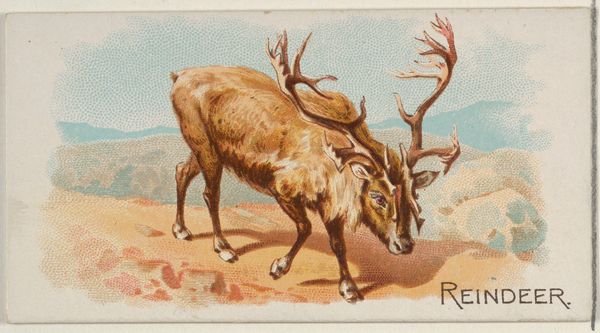
drawing, charcoal
#
portrait
#
drawing
#
landscape
#
charcoal drawing
#
oil painting
#
romanticism
#
watercolour illustration
#
charcoal
#
watercolor
#
realism
Copyright: Public domain
Editor: So, here we have Edwin Landseer’s "A Stag at Tarbet", rendered in charcoal. It's... contemplative. There's this huge, powerful animal, just lying there. What do you see in this piece, beyond just a resting stag? Curator: I see a loaded symbol of Highland identity, carefully constructed and then commodified. Landseer was instrumental in creating a specific image of Scotland for a predominantly English audience. Think about the social and political context: the Highland Clearances were ongoing, the romanticized view of the Highlands conveniently ignored the forced displacement of its people. Editor: So, the stag becomes a stand-in, in a way? Curator: Precisely. It embodies a sort of untamed nobility that was simultaneously admired and subdued. It speaks to the power dynamics inherent in British Imperialism, projecting a controlled, almost melancholic strength. Who benefits from that representation? Whose stories are erased? Editor: That makes me think about the use of landscape too. The stag seems almost...integrated into the landscape. Is that deliberate? Curator: Absolutely. The romanticized landscape, often depicted as rugged and untouched, served to further this constructed image. Landseer capitalised on the fashion for portraying animals as emblems of national pride. Consider too, the popularity of hunting among the elite; the stag as a trophy, a symbol of dominion over the natural world. Does knowing all this shift how you perceive its "contemplative" mood? Editor: Definitely. It feels less about quiet reflection and more like a very strategic image. It is unsettling to think about how popular imagery might distort a lived reality, though. Thanks for opening my eyes to that. Curator: My pleasure. Art reflects and refracts its time, so questioning whose narrative prevails is key.
Comments
No comments
Be the first to comment and join the conversation on the ultimate creative platform.
